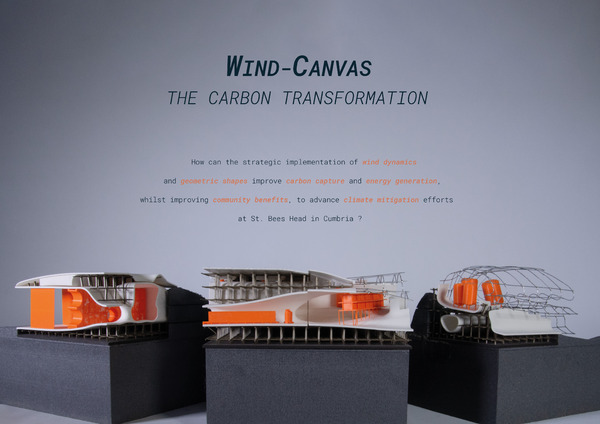Wind-Canvas; The Carbon Transformation
This project aims to combine the extreme challenge of mitigating climate change with a community benefit through architectural geometry and wind dynamics. The goal is to combine a research-oriented topic with a form-focused architectural design. The basis for this topic was initial climate-related research and an interactive exhibition oriented towards public perception of climate change covering the next 25 years. The result of this initial phase was that there was no time left to ignore the climate problems and that the public had a significant share in this.
Wind-Canvas is the name of this project, where carbon dioxide-loaded wind blows through a technical process. This process purifies the atmospheric air and converts the carbon dioxide into energy, a resource that directly benefits the surrounding communities. Located on the windy west coastline of Cumbria, the process benefits from higher wind speeds, which allows the process to be highly energy efficient and beneficial in mitigating climate change. Integrated into a new park that increases accessibility, this site is linked with the Coast-to-Coast Walk, offering a learning experience for the public. With direct access to the buildings, visitors can learn about the transformation process, the scale, and what it takes to mitigate climate change.
Using the Idea that natural wind flow can be used to generate energy and mitigate climate change, I researched general aerodynamics to be able to test different geometries and shapes in a fluid dynamic software to increase the natural wind speed. The increased speed allows for a higher carbon dioxide intake, producing more energy and allowing people to offset their carbon. This natural wind flow is the main actor of this transformation process and the key driver of the architectural form, which is generated through the wind flow being forced around the program, forming this dynamic shape.


